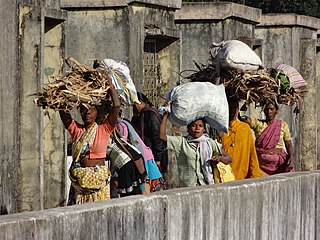Basia block is a CD block that forms an administrative division in the Basia subdivision of Gumla district, in the Indian state of Jharkhand.
Bharno block is a CD block that forms an administrative division in the Gumla subdivision of Gumla district, in the Indian state of Jharkhand.
Bishunpur block is a CD block that forms an administrative division in the Gumla subdivision of Gumla district, in the Indian state of Jharkhand.
Chainpur block is a CD block that forms an administrative division in the Chainpur subdivision of Gumla district, in the Indian state of Jharkhand.
Dumri block is a CD block that forms an administrative division in the Chainpur subdivisionS of Gumla district, in the Indian state of Jharkhand.
Ghaghra block is a CD block that forms an administrative division in the Gumla subdivision of Gumla district, in the Indian state of Jharkhand.
Kamdara block is a CD block that forms an administrative division in the Basia subdivision of Gumla district, in the Indian state of Jharkhand.
Palkot block is a CD block that forms an administrative division in the Basia subdivision of Gumla district, in the Indian state of Jharkhand.
Raidih block is a CD block that forms an administrative division in the Gumla subdivision of Gumla district, in the Indian state of Jharkhand.
Sisai block is a CD block that forms an administrative division in the Gumla subdivision of Gumla district, in the Indian state of Jharkhand.
Kolebira block is a CD block that forms an administrative division in the Simdega subdivision of Simdega district, in the Indian state of Jharkhand.

Bansjore block is a CD block that forms an administrative division in the Simdega subdivision of Simdega district, in the Indian state of Jharkhand.
Bolba block is a CD block that forms an administrative division in the Simdega subdivision of Simdega district, in the Indian state of Jharkhand.
Jaldega block is a CD block that forms an administrative division in the Simdega subdivision of Simdega district, in the Indian state of Jharkhand.
Pakartar block is a CD block that forms an administrative division in the Simdega subdivision of Simdega district, in the Indian state of Jharkhand.

Albert Ekka (Jari) block is a CD block that forms an administrative division in the Chainpur subdivision of Gumla district, in the Indian state of Jharkhand.

Simdega block is a CD block that forms an administrative division in the Simdega subdivision of Simdega district, in the Indian state of Jharkhand.

Gumla subdivision is an administrative subdivision of the Gumla district in the South Chotanagpur division in the state of Jharkhand, India.
Chainpur subdivision is an administrative subdivision of the Gumla district in the South Chotanagpur division in the state of Jharkhand, India.
Basia subdivision is an administrative subdivision of the Gumla district in the South Chotanagpur division in the state of Jharkhand, India.






